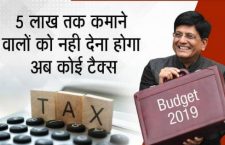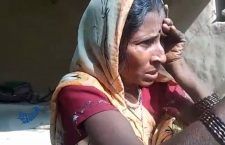An ongoing extortion in the village of Nivaeech, located in Tindwari block of district Banda in Uttar Pradesh, goes by a local name. It’s called the “geo-tagging wala” scheme or scam.
The last two months have seen villagers being regularly extorted by government surveyors in the name of geo-tagging. “They took money from us saying it was their wages; how the officials are refusing to pay out of their own pockets,” said villager Shivdeen, clearly enraged,“We have no option but to pay it.” He now knows that it is not a mere bribe, but a clear ruse to make money, since he haspaid amounts ranging from Rs. 100-200 not once, but many times over. He added bitterly, “It is the Prime Minister’s scheme, so we have no choice but to pay.”
What Shivdeen alluded to in the name of Narendra Modi is thePradhan Mantri Awas Yojna, which incorporates geo-tagging, the system of marking the geographical coordinates of the site location as well as photographing of the progress of a given work. After being integrated into various government programs like the MGNREGA and Garv, geo-tagging is being used to reduce instances of malpractice in the implementation of the housing scheme, as per the official line. The PMAY promises beneficiaries financial assistance of Rs. 1.2 lakh, an amount released in stages. However, problems such as the granting of money to ineligible individuals, fudged funds, and poor monitoring have been constant criticisms for this scheme that was launched amidst archetypal Modi-styled fanfare, back in 2016. Geo-tagging was then introduced as the proposed solution to increase transparency in the process—the reason for Awaas Soft dashboards that are updated in real time in the Rural Development Ministry. But the on-ground malpractices in the name of geo-tagging, remain unaccounted for.
“He had said that he was filling out the paperwork on this colony, and I asked him to fill it out for us as well. He said he’d do it for Rs. 100. The first time he came, that’s what he took from most people,” another Nivaeech resident Ramkishore explained, referring to the survey officer who had first visited their area in late December, “But then he came back and asked for Rs. 50 more; I paid him that too.”
Geo-tagging is driven by surveyors who collect data with Bhuvan-PMAY mobile app and supervisors who moderate the collected data at Bhuvan-PMAY geo-platform, based in the cities/states. The system that was supposed to cut out middle-men and increase both accountability and transparency has become a source of the problem—particularly ironic considering how anti-corruption has been a huge talking point for P.M. Modi.
There is also, of course, the age-old problem of a lack of awareness drives. Most Nivaeech residents were clueless about the geo-tagging itself, and what it meant – several people in fact assumed it had to do with yet another Jio scheme for the smartphone! Budhiya, who had paid Rs. 150 to the surveyor initially, simply said “I don’t know” when we asked her what she thought the money was for. Chameli, on the other hand, spoke of the “promise of a colony”, which is what she understood the payment had gone towards, “I haven’t got any colony to date.”
Governmental officials, meanwhile,resorted to terming the villagers“liars”. Santosh Kumar, the sachiv of the village, said, “Not a single penny has been taken from these people. They are all lying.” He also added with conviction, “The truth is that no one in our area has been asked for any money ever.”
Higher up the red tape jungle, the response became murkier. Heeralal, Banda’s CDO, came up with a jargon-laden response, “This is an issue of misinformation. With the geo-tagging scheme, a new listis being prepared based on geographical identification metadata for welfare schemes. But some people have the wrong idea about the purpose of this scheme. They think that they will get houses because of the geo-tagging.” He reiterated that the geo-tagging is not a step in getting access to the PMAY, and seemed to contradict himself almost immediately, “The government will use this process to create a proper database for eligibility for the housing schemes.”
Heeralal then decided to list out a step-by-step process, “People are a little worried about the slowness of the process but I would like to ask the people to have some patience. The process takes time.It takes time for individuals to go to every household, crosscheck their identification proof, click the pictures and then upload it to the online database. Even an incredibly productive individual cannot do more than 8-10 houses in a day.” Hewas quick to deny the possibility of the existence of a corruption scandal. “As far as we know, there are no such problems. But if you insist that there has been even one such instance, an investigation will be conducted as soon as possible.”
In the meanwhile, villagers like Shivdeen, although angry, are all but resigned to their fates, “We’re just going to have to keep paying them with every election cycle. It’s like 100 bucks more, 100 bucks again. Why don’t we just hand over our earnings to them?”
This Khabar Lahariya article first appeared on The Wire.

